What is a Shamanic Journey?
Shamanic journeying is an ancient spiritual practice in various forms across many indigenous cultures worldwide. At its core, shamanic journeying is a technique used to enter altered states of consciousness, allowing practitioners to connect with spiritual guides, access wisdom, and facilitate healing.
Esteemed shamanic teachers such as Sandra Ingerman, Jane Burns, Puma Fredy Quispe Singona, don Oscar Miro-Quesada, and Dr. Alberto Villoldo have dedicated their lives to studying and teaching the art of shamanic journeying. They share a common understanding that this practice can offer profound insights and transformational experiences for those who engage with it respectfully and with an open heart.
AFFILIATE DISCLAIMER:
This site contains affiliate links to products, online events, and tools for personal & professional transformation from Sounds True. The Shift Network, MindValley, Evolving Wisdom, Positive Psychology, mindbodygreen, and other reputable and consciously aligned personal development, spiritual growth, and transformational companies. We set ourselves apart by vetting teachings and resources calibrated to be of higher consciousness, meaning upward-lifting, positively oriented, and constructive. We may receive a commission for purchases made through these links.
Understanding Shamanic Journeying: A Historical Perspective
Origins and Universal Presence
Shamanic journeying is a practice rooted in the shamanistic traditions of indigenous cultures worldwide.
The origins of shamanism are ancient and difficult to pinpoint, but it is believed to predate organized religions and can be traced back tens of thousands of years.
Shamanism is not a single, uniform belief system but rather a range of practices and beliefs associated with different indigenous cultures across the globe.
The universal presence of shamanism in indigenous cultures suggests that it likely emerged independently among various peoples as a response to the human need for healing, guidance, and understanding of the world.
Many of these cultures believe in a spiritual world alongside the physical world, and shamans are seen as intermediaries or messengers between these two realms.
They are often regarded as healers, spiritual leaders, or community advisors, using altered states of consciousness to interact with spirits, deities, or other
Shamanism is of Higher Consciousness
According to ConsciousnessCalibrations.com, shamanism is of higher consciousness and calibrates above 200 on Dr. David R. Hawkins’s Map of Consciousness®.
To find out more about higher levels of consciousness, click here and for lower levels of consciousness click here.
Core Beliefs and Practices of Shamanic Journeying
 Shamanic journeying is grounded in core beliefs and practices that, while varying widely across different cultures, share some common elements. These core aspects include the belief in an interconnected universe where the physical and spiritual realms are closely linked, the practice of entering altered states of consciousness to access spiritual guidance and healing, and the role of the shaman as a mediator between the human community and the spirit world.
Shamanic journeying is grounded in core beliefs and practices that, while varying widely across different cultures, share some common elements. These core aspects include the belief in an interconnected universe where the physical and spiritual realms are closely linked, the practice of entering altered states of consciousness to access spiritual guidance and healing, and the role of the shaman as a mediator between the human community and the spirit world.
- Interconnectedness of All Life: Central to the shamanic worldview is the belief that all elements of the universe are interconnected. This includes humans, animals, plants, rocks, and even weather patterns. The shamanic perspective sees life as a web of relationships where everything has spirit and consciousness.
- Altered States of Consciousness: Shamans enter altered states of consciousness, often called journeys, to interact with the spirit world. These states are typically induced through rhythmic drumming, dancing, fasting, or psychoactive substances. Shamans may travel to other worlds in these states, seek knowledge, or work with spiritual entities.
- Spiritual Realms: Most shamanic traditions recognize multiple spiritual realms or worlds that exist alongside our physical reality. These are often categorized as upper, middle, and lower worlds, each with its characteristics and inhabitants. Shamans journey to these worlds for various purposes, such as retrieving lost souls or consulting with spirit guides.
 Shamanic Healing: Healing is a primary function of the shaman. This can be physical, psychological, or spiritual healing. Shamans may work to cure illnesses by restoring balance, removing harmful spirits, or retrieving parts of the soul lost due to trauma, known as soul retrieval.
Shamanic Healing: Healing is a primary function of the shaman. This can be physical, psychological, or spiritual healing. Shamans may work to cure illnesses by restoring balance, removing harmful spirits, or retrieving parts of the soul lost due to trauma, known as soul retrieval.- Divination and Guidance: Shamans often serve as oracles or diviners, providing guidance and insight into future events or the causes of current problems. They may interpret signs from the natural world or directly communicate with spirits to advise their community.
- Ritual and Ceremony: Shamanic rituals and ceremonies are essential in shamanism for creating sacred space, honoring spirits, and marking significant life events. These shamanic practices help to maintain harmony between the community, the natural world, and the spirit realm.
- Animism and Totemism: Many shamanic cultures are animistic, believing everything has a spirit. Totemism, or the association with and reverence for spirit animals, is also common. Shamans may have one or more spirit animals that guide them or lend them power on their journeys.
-
Community Service: Shamans are often community leaders and are dedicated to the service of their people. Their work is for individual healing and the well-being of the community and the environment.
These core beliefs and practices form the foundation of shamanic journeying and are adapted to fit the specific cultural, environmental, and historical contexts of different indigenous peoples worldwide.
Preparation for Shamanic Journeying: Setting Intentions and Creating Sacred Space
In preparation for shamanic journeying, setting clear intentions and creating a sacred space are crucial steps that facilitate a meaningful and safe experience. These practices are deeply rooted in the shamanic tradition and reflect shamans’ profound respect for the spiritual realms they interact with.
- Establishing Clear Intentions
- The process of establishing clear intentions begins with self-reflection and identifying the purpose of the journey. This could involve seeking healing, guidance, or knowledge. The intention acts as a guiding force, directing the journey and ensuring its focus.
- Articulating the intention is essential as it helps to align the shaman’s energy with their goals. It can be spoken aloud, written down, or held silently in the mind. Clarity of intention is believed to aid in connecting with the appropriate spirits and energies to achieve the desired outcome.
- Setting intentions also involves preparing oneself mentally and emotionally for the journey. This includes letting go of expectations and being open to whatever experiences may come, trusting that the journey will provide what is needed for growth and healing.
- Creating a Sacred Environment
-
The creation of a sacred environment is a ritualistic process that honors the spiritual significance of the journey. It often involves cleansing the physical space where the journey will take place, which can be done through smudging with sage, palo santo, or other herbs known for their purifying properties.
- The space is then usually arranged to promote a sense of safety and comfort. This might include setting up an altar with objects that hold personal or spiritual significance, such as stones, feathers, images of deities or spirit animals, and offerings.
- The environment is further sanctified through sound, like drumming or chanting, which helps shift consciousness and signals the beginning of the sacred work. The space becomes a threshold between worlds, transforming the ordinary into the extraordinary.
-
- Protective Measures and Spiritual Allies
- Before embarking on a journey, shamans often invoke protection to guard against harmful influences. This can be done by calling upon spiritual allies, such as guardian spirits, ancestors, or totem animals, to watch over and guide the journey.
- Protective measures might also include visualizing a shield or barrier of light around oneself or the sacred space. This serves as a boundary that allows only beneficial energies to enter.
- Establishing a connection with spiritual allies is not only for protection but also for assistance during the journey. These allies can offer strength, wisdom, and support, helping the shaman navigate the spiritual realms and accomplish their intentions.
These subtopics outline the preparatory steps that are integral to shamanic journeying. They reflect shamans’ careful and respectful approach when interacting with the spiritual world, ensuring that their practices are conducted with integrity and purpose.
The Three Worlds of Shamanic Journeying
In the context of shamanic journeying, the concept of the Three Worlds forms a framework for understanding the different regions or dimensions that a shaman can navigate during their journeys. Each world has its own unique characteristics and serves specific purposes in the shamanic practice.
The Upper World: Realms of Wisdom and Guidance
 The Upper World is often perceived as a place of higher spiritual consciousness and enlightenment. It is associated with celestial realms, light, and transcendent experiences. In many traditions, it is considered the home of ancestors, spirit guides, and deities.
The Upper World is often perceived as a place of higher spiritual consciousness and enlightenment. It is associated with celestial realms, light, and transcendent experiences. In many traditions, it is considered the home of ancestors, spirit guides, and deities.- Journeying to the Upper World typically involves ascending through various levels or layers of the cosmos. The shaman may envision climbing a great tree, ladder, or mountain or taking flight to reach this realm.
- Once there, the shaman seeks wisdom and guidance from the enlightened beings residing there. These entities are often approached for their knowledge, which can provide insight into life’s challenges, spiritual growth, and the greater mysteries of existence.
- The experiences in the Upper World are usually characterized by clarity, profound peace, and a sense of interconnectedness with all of creation. The guidance received here is often returned to the community to aid decision-making, healing, and understanding one’s life path.
The Middle World: Our Immediate Spiritual Landscape
- The Middle World is considered the spiritual reflection of our physical reality. The realm exists parallel to our everyday world and includes nature spirits, elemental forces, and the spirits of places.
- Shamans may engage with the spirits of trees, rivers, mountains, and other natural elements in this world. It is also the space where one might encounter ghosts or unsettled spirits still connected to the Earth.
- The Middle World is a place where shamans can perform tasks such as finding lost objects, communicating with non-human entities, and working with the land itself to bring about healing or balance.
- It is important to note that the Middle World can be a neutral or even potentially dangerous place, as it mirrors the duality and unpredictability of the physical world. Therefore, shamans must navigate this realm with respect and caution, often employing their protective measures and spiritual allies.
The Lower World: Inner Depths and Personal Power Animals**
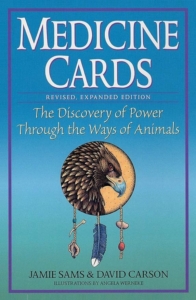 The Lower World is often depicted as an underworld or underground realm rich with symbolism and primordial energy. It is a place of intuition, instinct, and profound personal transformation.
The Lower World is often depicted as an underworld or underground realm rich with symbolism and primordial energy. It is a place of intuition, instinct, and profound personal transformation.- Access to the Lower World is frequently visualized as a descent into the earth, such as through a cave, tunnel, or root system. The environment here may range from lush forests to deserts or oceans, each landscape holding a different significance.
- One of the key aspects of the Lower World is encounters with power animals or spirit animals. These personal guides embody the qualities and strengths the shaman needs or connects with. They can offer protection, teach survival skills, and provide insights into one’s inner self.
- The Lower World is also a space for soul retrieval, where shamans may journey to recover lost parts of the human soul due to trauma or illness. Restoring these soul parts is believed to bring about healing and wholeness.
These three worlds provide a map for the shamanic journey, each offering distinct experiences and opportunities for growth. The shaman’s ability to navigate these realms with skill and reverence is central to the practice of shamanic journeying.
How to Undertake a Shamanic Journey: A Step-by-Step Guide
In shamanic journeying, the process is often facilitated by a series of steps that help the practitioner enter into and navigate the spiritual realms. The following subsections provide a step-by-step guide to undertaking a shamanic journey.
The Role of the Drum and Rattle
 Drums and rattles are traditional tools used in shamanism to induce altered states of consciousness. The repetitive and rhythmic sounds they produce help to shift brain waves from the waking state (beta) to the trance state (theta), which is conducive to spiritual experiences.
Drums and rattles are traditional tools used in shamanism to induce altered states of consciousness. The repetitive and rhythmic sounds they produce help to shift brain waves from the waking state (beta) to the trance state (theta), which is conducive to spiritual experiences.- The drumbeat is sometimes called the “horse” the shaman rides into the spirit world. This sonic driving technique propels the journey forward and provides a steady anchor for the practitioner’s consciousness.
- Rattles can also clear energy, call in protective spirits, and signal transitions during the journey. Both drums and rattles are considered sacred objects treated with respect and often consecrated for their purpose.
Entering the Shamanic State of Consciousness
- To enter the shamanic state of consciousness, practitioners begin by finding a quiet and comfortable space where they will not be disturbed. They may start with deep breathing or other relaxation techniques to calm the mind and body.
- As the drumming or rattling commences, the shaman focuses on their intention for the journey. This intention acts as a compass throughout the experience.
- The practitioner then visualizes an entry point to the spirit world, such as a tree, cave, or hole in the ground. This imagery helps to facilitate the transition from ordinary reality to the shamanic realms.
- The shaman allows themselves to be carried by the sound of the drum or rattle, letting go of the analytical mind and surrendering to the journey.
Navigating the Shamanic Realms
 Once in the shamanic state of consciousness, the practitioner explores the spiritual landscape. This may involve traveling through the Upper, Middle, or Lower Worlds, depending on the intention set at the beginning.
Once in the shamanic state of consciousness, the practitioner explores the spiritual landscape. This may involve traveling through the Upper, Middle, or Lower Worlds, depending on the intention set at the beginning.- Navigation is guided by intuition, the sounds of the drum or rattle, and the shaman’s own spiritual allies. It is important to remain focused on the intention to avoid getting lost or sidetracked.
- The shaman remains aware of their surroundings and any messages or symbols that may appear. Everything encountered in the journey is considered to have significance.
Interacting with Spirit Guides and Teachers
- Shamans often meet with spirit guides, power animals, ancestors, or other teachers during the journey. These encounters are central to receiving guidance, wisdom, and healing.
- The shaman approaches these beings with humility and respect, often asking permission to engage with them and express gratitude for their presence and assistance.
- Questions may be asked, and the shaman listens carefully to the responses, which can come in various forms such as words, feelings, images, or sensations.
- Maintaining a respectful dialogue and remembering that the shaman is a guest in the spirit world is crucial.
Receiving Wisdom and Healing
 The ultimate goal of the shamanic journey is to receive wisdom, insight, and healing that can be brought back for personal growth or to benefit others.
The ultimate goal of the shamanic journey is to receive wisdom, insight, and healing that can be brought back for personal growth or to benefit others.- The shaman pays close attention to the lessons and insights the spirit guides provide and considers how they can be applied in the physical world.
- Healing may occur on many levels—physical, emotional, mental, or spiritual—and may involve retrieving lost soul parts, the removal of energetic blockages, or infusing power and vitality.
- After the journey, the shaman retraces their path back to the entry point, carrying the gifts and knowledge they have acquired.
Upon returning to ordinary consciousness, the shaman must ground themselves, often by eating or drinking something. They may also document their journey, reflecting on the experiences and interpreting the symbols and messages received. This helps to integrate the journey into one’s life and enact any changes or healing the spirit guides indicate.
Integration of the Shamanic Journey: Bringing the Wisdom Back
The Importance of Integration
Integration is a crucial phase following a shamanic journey, where the insights and experiences encountered in the spiritual realm are assimilated into one’s daily life. This process allows for the transformational potential of the journey to be realized and actualized. Without integration, the journey may remain an isolated experience with limited impact on the individual’s practical reality.
The integration process often involves reflection, interpretation, and the application of the wisdom gained. It requires time and intention to understand the spirit world’s symbolic language and discern how it relates to one’s personal growth and challenges. The ultimate goal is to bring about positive change and healing for the individual and their community and environment.
Translating Spiritual Insights into Daily Life
 Translating spiritual insights into daily life is about making the abstract concrete. It involves taking the lessons, visions, or messages received during the journey and applying them to enhance one’s life and the lives of others. This can manifest in various ways, such as adopting new behaviors, changing thought patterns, improving relationships, or engaging in creative expression.
Translating spiritual insights into daily life is about making the abstract concrete. It involves taking the lessons, visions, or messages received during the journey and applying them to enhance one’s life and the lives of others. This can manifest in various ways, such as adopting new behaviors, changing thought patterns, improving relationships, or engaging in creative expression.
For instance, if a shamanic journey reveals the need for balance in one’s life, this insight could lead to tangible actions such as adjusting work habits, spending more time in nature, or practicing mindfulness. The key is to find practical applications for the spiritual teachings so that they contribute to personal development and societal well-being.
Sharing Your Experience with a Community
Sharing one’s shamanic journey experience with a community can serve multiple purposes. It can provide the individual with support and validation as they navigate their integration process. It can also offer others valuable perspectives and encourage communal growth. In many indigenous cultures, the sharing of experiences is a collective activity that reinforces social bonds and cultural identity.
When sharing, it is vital to respect the experience’s sacred nature and sensitivity to the listeners’ beliefs and values. The act of sharing can be therapeutic and help solidify the insights gained. It also allows the community to benefit from the journey’s wisdom, as the shaman’s role is not only as a healer but also as a teacher and guide for their people.
Advanced Practices in Shamanic Journeying
Shamanic journeying is a multifaceted practice with advanced techniques that cater to specific healing and spiritual needs. Among these, soul retrieval and spiritual healing, working with ancestors and descendants, and engaging with elemental spirits and the land are considered advanced practices within the shamanic tradition.
 Soul Retrieval and Spiritual Healing: Soul retrieval is a profound healing ritual to recover parts of an individual’s soul that may have become disconnected, lost, or trapped due to traumatic experiences. The belief is that trauma can result in soul loss, leading to emotional, physical, and mental imbalances. In soul retrieval, the shaman enters an altered state of consciousness and journeys to the spirit realms to locate and return these lost soul parts to the individual. This restoration is thought to bring about healing by reintegrating the person’s essence, thus producing vitality and wholeness. Spiritual healing in this context also extends to removing spiritual blockages or intrusive energies that might affect a person’s health.
Soul Retrieval and Spiritual Healing: Soul retrieval is a profound healing ritual to recover parts of an individual’s soul that may have become disconnected, lost, or trapped due to traumatic experiences. The belief is that trauma can result in soul loss, leading to emotional, physical, and mental imbalances. In soul retrieval, the shaman enters an altered state of consciousness and journeys to the spirit realms to locate and return these lost soul parts to the individual. This restoration is thought to bring about healing by reintegrating the person’s essence, thus producing vitality and wholeness. Spiritual healing in this context also extends to removing spiritual blockages or intrusive energies that might affect a person’s health.- Working with Ancestors and Descendants: This practice involves the shamanic practitioner connecting with the spirits of one’s ancestors or future descendants for guidance, healing, or support. Ancestors are revered as wise elders who can offer insight and protection, while descendants represent the future lineage and the continuation of life. Shamans may journey to communicate with these spirits to heal ancestral wounds that could impact current generations or seek wisdom in making decisions that will affect future generations. This work emphasizes the temporal interconnectedness and the responsibility towards both past and future members of one’s lineage.
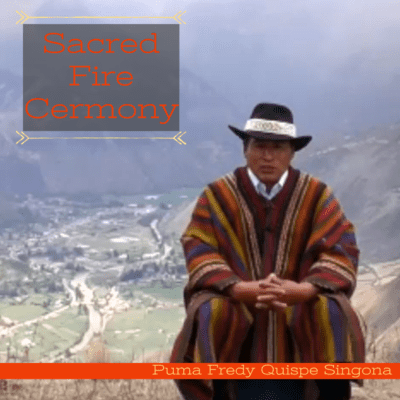 Engaging with Elemental Spirits and the Land: Elemental spirits refer to the spirits of earth, air, fire, water, and sometimes ether or spirit, which are fundamental components of the world in many shamanic cosmologies. Engaging with these spirits involves recognizing and honoring their presence in the natural world. Shamans may work with these spirits to learn from them, ask for their assistance in healing, or maintain balance within the environment. Similarly, the land is seen as a living entity with its spirit. Working with the land involves understanding the deep connection between the physical place and its spiritual essence, which may include communicating with the spirits of particular places, such as mountains, rivers, or forests, and performing ceremonies to honor and heal the land.
Engaging with Elemental Spirits and the Land: Elemental spirits refer to the spirits of earth, air, fire, water, and sometimes ether or spirit, which are fundamental components of the world in many shamanic cosmologies. Engaging with these spirits involves recognizing and honoring their presence in the natural world. Shamans may work with these spirits to learn from them, ask for their assistance in healing, or maintain balance within the environment. Similarly, the land is seen as a living entity with its spirit. Working with the land involves understanding the deep connection between the physical place and its spiritual essence, which may include communicating with the spirits of particular places, such as mountains, rivers, or forests, and performing ceremonies to honor and heal the land.
These advanced practices require a deep understanding of the shamanic worldview and a strong relationship with the spirit world. They are typically performed by experienced shamans who have undergone extensive training and personal transformation. Each practice deepens the connection between the physical and spiritual realms, offering healing and guidance to individuals, communities, and the environment as a whole.
Challenges and Misconceptions About Shamanic Journeying
Challenges and misconceptions about shamanic journeying can arise from various sources, including cultural misunderstandings, appropriation, and the complexities inherent in translating indigenous practices into a modern context.
Common Misunderstandings
 One of the primary challenges in understanding shamanic journeying is the tendency to oversimplify or misinterpret these practices. For instance, there is often a misconception that shamanism is a monolithic practice when in reality, it varies significantly across different cultures. Another misunderstanding is the romanticization of shamanism as a purely positive and healing practice, ignoring the fact that in many traditions, shamans also deal with harmful spirits or lower levels of consciousness.
One of the primary challenges in understanding shamanic journeying is the tendency to oversimplify or misinterpret these practices. For instance, there is often a misconception that shamanism is a monolithic practice when in reality, it varies significantly across different cultures. Another misunderstanding is the romanticization of shamanism as a purely positive and healing practice, ignoring the fact that in many traditions, shamans also deal with harmful spirits or lower levels of consciousness.
Additionally, the use of psychoactive substances in some shamanic practices has led to misconceptions that these are recreational or for everyone’s use, when traditionally, they are sacred tools used within specific ritual contexts. There is also a tendency to conflate shamanic journeying with standard New Age practices (which calibrate at lower levels of consciousness according to consciousness research), which may lack the depth, community connection, and cultural significance of traditional shamanic work. According to ConsciousnessCalibrations.com, Shamanism calibrates at a higher level of consciousness and the same level of consciousness of the earth and the human body.
Respecting Cultural Traditions
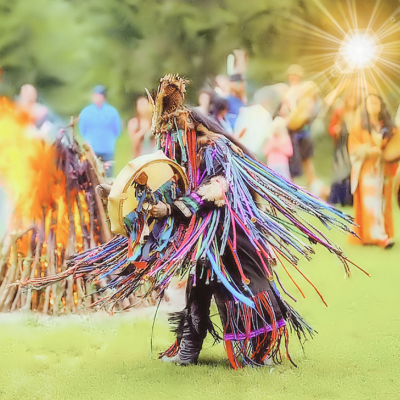 A significant challenge related to shamanic journeying is respecting and honoring the cultural traditions from which these practices originate. This includes recognizing the rights of indigenous peoples to maintain ownership of their cultural heritage. Cultural appropriation occurs when individuals from outside a culture adopt shamanic practices without proper understanding or respect for their deep cultural meanings and without acknowledgment of the source communities.
A significant challenge related to shamanic journeying is respecting and honoring the cultural traditions from which these practices originate. This includes recognizing the rights of indigenous peoples to maintain ownership of their cultural heritage. Cultural appropriation occurs when individuals from outside a culture adopt shamanic practices without proper understanding or respect for their deep cultural meanings and without acknowledgment of the source communities.
It is essential to approach these traditions with humility and seek guidance from authentic practitioners willing to share their knowledge. Engaging with shamanic practices requires sensitivity to the historical context of colonization and the ongoing struggles of indigenous peoples to preserve their cultures.
Ethical Considerations
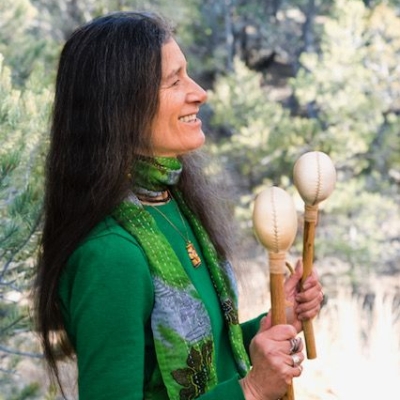
Sandra Ingerman, Esteemed Shamanic Instructor, Known as The Shaman’s Shaman
Ethical considerations in shamanic journeying involve the responsibilities of practitioners and those seeking to learn about or participate in shamanism. Practitioners must work with integrity, ensuring they do not exploit their role for personal gain at the expense of others’ well-being. They should also be mindful of not causing harm through their intentional or unintentional interventions.
For those interested in learning about shamanism, it is crucial to approach these practices with an ethical mindset, which includes not commodifying or trivializing them. It also means recognizing the importance of consent and personal boundaries, as shamanic journeying often involves intimate spiritual experiences.
In summary, addressing these challenges and misconceptions requires a commitment to ongoing education, cultural sensitivity, and ethical engagement with shamanic traditions. It is essential to foster dialogue and understanding between indigenous cultures and those wishing to learn from them, ensuring that shamanic practices are honored and preserved in a way that respects their origins and living traditions.
Discover our curated shamanic teachers here.
The Future of Shamanic Journeying: Bridging Ancient Wisdom and Modern Life
The Relevance of Shamanism Today
 Despite its ancient origins, Shamanism continues to be relevant in the modern world for several reasons. In a time when many people feel disconnected from nature and community, shamanic practices offer a means of re-establishing these vital connections. The emphasis on interconnectedness within shamanism resonates with contemporary concerns about environmental sustainability and ecological balance. Additionally, the shamanic focus on inner exploration and personal transformation aligns with modern interests in self-improvement and psychological well-being.
Despite its ancient origins, Shamanism continues to be relevant in the modern world for several reasons. In a time when many people feel disconnected from nature and community, shamanic practices offer a means of re-establishing these vital connections. The emphasis on interconnectedness within shamanism resonates with contemporary concerns about environmental sustainability and ecological balance. Additionally, the shamanic focus on inner exploration and personal transformation aligns with modern interests in self-improvement and psychological well-being.
Furthermore, as societies become more multicultural, there is a growing interest in diverse spiritual traditions and a recognition of the value of indigenous wisdom. This has led to a resurgence of shamanic practices among people seeking alternative or complementary spiritual experiences. Shamanism’s holistic approach to healing—addressing the mind, body, and spirit—also appeals to those disillusioned with the often fragmented care found in conventional medicine.
Integrating Shamanic Practices into Contemporary Therapies
 The integration of shamanic practices into contemporary therapies is an area of increasing interest among mental health professionals. This integration takes various forms, such as the use of shamanic drumming and journeying techniques within therapeutic settings to help individuals access their subconscious and work through emotional issues. Some therapists are incorporating the concept of soul retrieval, a common shamanic healing practice, to address trauma and restore psychological wholeness.
The integration of shamanic practices into contemporary therapies is an area of increasing interest among mental health professionals. This integration takes various forms, such as the use of shamanic drumming and journeying techniques within therapeutic settings to help individuals access their subconscious and work through emotional issues. Some therapists are incorporating the concept of soul retrieval, a common shamanic healing practice, to address trauma and restore psychological wholeness.
Moreover, using nature-based interventions and incorporating rituals and ceremonies can enhance the therapeutic process by providing clients with a sense of meaning and connection to something larger than themselves. It is important to note that such integrations must be done respectfully and knowledgeably, often involving collaboration with or guidance from indigenous practitioners to ensure cultural sensitivity and integrity.
The Role of Shamanism in Global Healing
 Shamanism’s role in global healing is multifaceted. On an ecological level, shamanic teachings about the sacredness of the earth and all its inhabitants can contribute to environmental conservation efforts and promote a more sustainable relationship with the planet. By fostering a deep respect for nature, shamanism encourages practices that honor the earth, which is critical in addressing climate change and environmental degradation.
Shamanism’s role in global healing is multifaceted. On an ecological level, shamanic teachings about the sacredness of the earth and all its inhabitants can contribute to environmental conservation efforts and promote a more sustainable relationship with the planet. By fostering a deep respect for nature, shamanism encourages practices that honor the earth, which is critical in addressing climate change and environmental degradation.
On a societal level, shamanic principles of community, reciprocity, and balance can inform approaches to social justice and community development. The shamanic tradition of peacemaking and conflict resolution often involves community dialogue and restorative justice, can offer valuable insights for modern societies grappling with division and strife.
Finally, on a personal level, the growth and healing facilitated by shamanic practices can lead to increased compassion, empathy, and a sense of responsibility towards others. As individuals heal and transform, they can become agents of change, contributing to the collective healing of their communities and, by extension, the world.




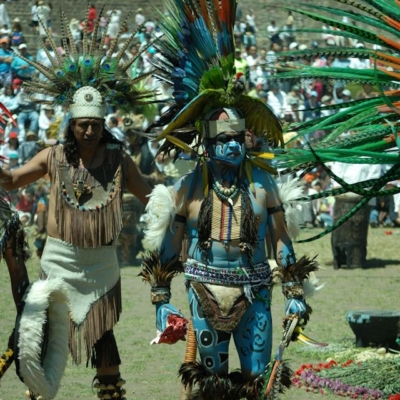

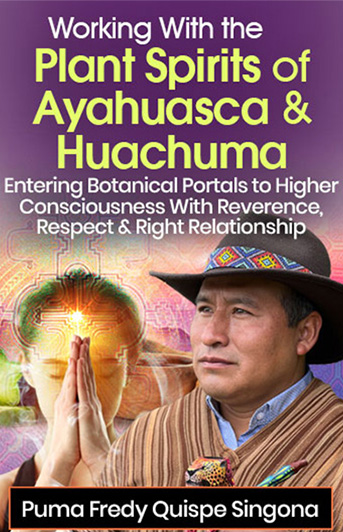






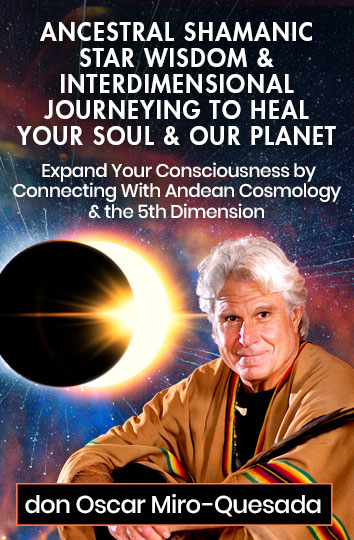
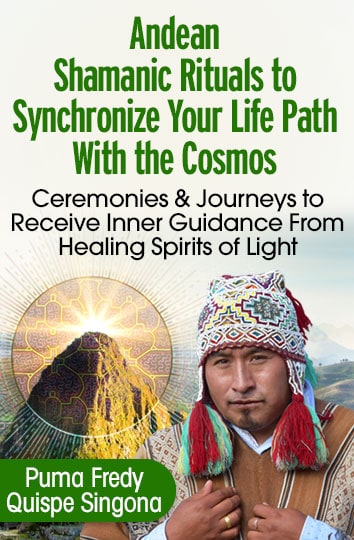
Leave a Reply